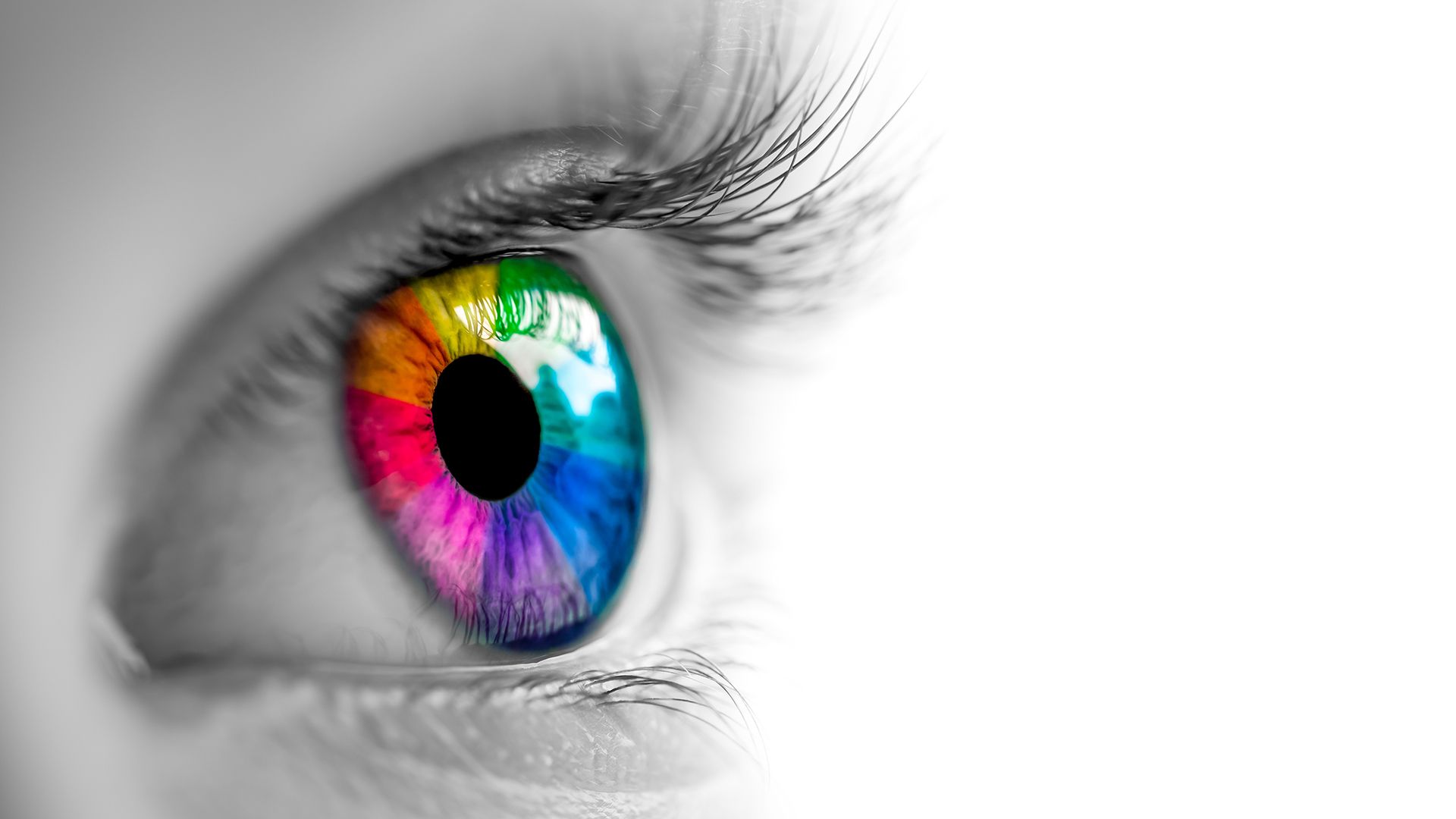Innovative Vision Development Services in Annapolis & Glen Burnie, MD
The Center for Vision Development is committed to utilizing the latest technology available to aid in the diagnosis and treatment of visual deficiencies.
Learn More About Us
Welcome To The Center for Vision Development
Welcome to The Center for Vision Development. We are a dynamic practice of behavioral optometrists, vision therapists, and educational advocates working to enhance neurological visual disorders through consultations, advocacy, and one-on-one individualized therapy.
Conveniently located in Annapolis, Maryland, The Center for Vision Development provides care for Severna Park, Arnold, Bowie, Washington D.C., Prince Frederick, Crofton, Glen Burnie, Laurel, Columbia, Baltimore, Easton, Salisbury, and all of the surrounding communities.


MEET THE DOCTORS


Meet Our Team
Dr. Jennifer Kungle, FCOVD
When Dr. Jennifer Kungle was a child, she suffered from lazy eye. She tried glasses and contact lenses to remedy the issue, but neither worked. During this time, she became interested in learning more about all of the alternate treatments that expanded beyond the typical vision specialist. Eventually, Dr. Kungle’s vision would improve, and she was eager to get into the field of optometry to help others improve their vision issues. Today, not only is Dr. Kungle an optometrist, she’s also the proud owner of The Center for Vision Development!

Meet Our Team
Dr. Emily O’Meara, FCOVD
When a person picks a profession, they enter a field where they can leave a lasting positive impact on people’s lives. After Dr. Emily O’Meara joined The Center for Vision Development in 2011, she found herself in the perfect position to do precisely this. Through the realm of vision therapy, she has been able to help people improve their work, school, career and athletic endeavors. It’s safe to say that she has indeed been able to leave a positive impression on people’s lives!

Meet Our Team
Dr. Ronald Berger, FCOVD
When Dr. Ronald Berger met Dr. Kungle over two decades ago, she was a student in optometry school who sought an externship. He hired her to work at his practice. Fast forward 25 years later, and the two doctors reunited. Except this time, it was Dr. Kungle who was inviting Dr. Berger to come and help out at her vision practice, The Center for Vision Development. Dr. Berger happily accepted the offer and today, he’s still there!

Meet Our Team
Cheryl
OFFICE MANAGERFrom working as a firefighter/paramedic, to various office settings, to a surgery center, to pediatrics, Cheryl has seen and done it all. She has taken her experiences and knowledge acquired from all of those previous positions and has applied them to her current one – office manager at The Center for Vision Development!

Meet Our Team
Kerry
VISION THERAPY MANAGER/PATIENT CARE COORDINATORTwelve years ago, Kerry was a kindergarten teacher. This is when she would witness firsthand just how much vision problems can affect other people. Seeing her students struggle with their vision in the classroom was concerning, so she decided to do something about it. She decided to become a vision therapist, and now that she’s a member of The Center for Vision Development staff, she’s in a position to help people solve their vision problems!

Meet Our Team
Debbie
VISION THERAPISTOne of the best parts about being in any healthcare field is being able to help other people. You always want to make sure that they’re in better condition when they leave you then they were in when they found you. Debbie can attest to this. As a vision therapist at The Center for Vision Development, she embraces every day as a new journey, a new opportunity to learn and a near opportunity to help people!

Meet Our Team
Julia
VISION THERAPISTBeing a vision therapist allows one to work with all types of people from various backgrounds and age ranges. As a vision therapist at The Center for Vision Development, Julia knows this all too well. She used to work with children, then realized she preferred one-on-one interaction with seniors. Now she gets to work on a one-on-one basis with both seniors and children, and help them with their vision issues!

Meet Our Team
Cassidy
VISION THERAPISTCassidy hails from the Annapolis and Crofton areas. After being homeschooled for both middle and high school, she attended Anne Arundel Community College. Today she’s a vision therapist at The Center for Vision Development, where she is able to help people from all walks of life with their vision problems!

Meet Our Team
Juanita
VISION THERAPISTJuanita always had a vision that involved helping people improve their visual skills, and consequently improving their quality of life. So it’s ironically appropriate that her “vision” led to her becoming a vision therapist (still in training) at The Center for Vision Development!

Meet Our Team
Ideliya
VISION TECHNICIANHi! I'm a technician here at the Center for Vision development. When I first applied, I didn't know exactly what this job entailed. All I knew is I wanted to work in a healthcare setting. After working here for over a year, I knew this was the field I was most passionate about in healthcare. The amount of patient interaction and critical thinking that is required for this job draws me in the most. I love our community of patients and I'm excited to pursue this career for the future ☺️

Meet Our Team
Chelsea
VISION THERAPISTChelsea began her career path by earning a Bachelor of Science degree in Psychology. Following graduation, she spent over ten years in behavioral health, with a focus on case management and teaching in special education. After some soul searching, it was time to discover a new career path, and that’s how she came across The Center for Vision Development. The connection between the brain and the eyes, with a holistic approach, is what ultimately drew her toward the field of vision therapy.

Meet Our Team
Valerie
VISION TECHNICIANGrowing up in Maryland, Valerie struggled to see clearly in early childhood but did not wear glasses until high school. She took many classes in high school and college that helped her learn about how the brain works and how we think, classes about childhood development, and general medical field information because she knew she wanted to help people.

Meet Our Team
Leslie
RECEPTIONISTSometimes you get job referrals from sources you’d least expect. Take Leslie, for example. She was informed of an open front desk receptionist position at a local vision clinic by a friend of hers at church. The next thing Leslie knew, she was a part of the The Center for Vision Development family!

Meet Our Team
Mytease
RECEPTIONISTSometimes a person just needs to embark on a new career and embark on a new adventure. Mytease Brown definitely can relate. As a receptionist at The Center for Vision Development, she has found a place where she can put her administrative skills on display on a daily basis!
40+
Years Of Experience
1100+
Happy Vision Therapy Graduates
Testimonials
4.9 Average Reviews
Thank you for all of the quality care that you and the staff at the Center for Vision Development have provided for me and Sam over the years. The level of professionalism, kindness, compassion, and sincerity has been exactly what we both needed. We will miss you dearly.
By Donna L.
Since starting vision therapy, I have noticed a significant improvement in my school work. I am now able to copy more down from the board without looking up multiple times. Also, since I am now able to copy down more, my grades have gone up tremendously. I can now take tests and do close-up work without getting constant headaches. Finally, I am now allowed to take the driver’s ed test to get my permit! I would not have been able to do all this without the spectacular help of my therapists and therapists-in-training. I owe my success to Ms. Annie, Ms. Kerry, Ms. Jenna, and Dr. Kungle. Thank you for your love and support
By Caitlin R.
I was referred to vision therapy after sustaining a concussion. The concussion interfered with my ability to read, concentrate, and focus. I experienced light sensitivity and headaches resulting in my avoiding some activities I normally participated in, which included playing bridge, reading, working crossword puzzles, and sudokus.
Through weeks of weekly visits and daily “homework,” my ability to focus and concentrate improved significantly. I once again was able to read a newspaper and comprehend what I was reading without getting a headache or having issues with my eyes.
The therapists at The Center for Vision Development are all wonderful and very caring individuals. I especially developed a bond with Joanne and thought I benefitted from routinely being with her as she really knew my history and witnessed my development. She was very encouraging, caring, and supportive as I went through the therapy.
Also, Cheryl was wonderful to deal with on a regular basis and helped me significantly when I had an issue with a headache and vision limitation. Dealing with a person and not an answering machine was wonderful. She dealt with my issue as though it was as important to her as me.
By Debbie P.
Whenever I would look up at the board, it was blurry or doubled. And I play soccer so whenever the ball came at me, I would get confused. I also do band so when I had a solo at the beginning of the year, there was no way I could play it, so I memorized it. Now, I play not needing to memorize notes. At school, they make us read out loud. I would get nervous, stutter, repeat words, and it held up the class because it was so slow. Now, I read faster and more clearly than half of the kids in my class. Sometimes at school, I would open the wrong locker or grab the wrong copybook. I can read the menu at restaurants, and I’m not scared or afraid to read. People would ask why I’m slow at reading, and I would say I don’t know, but now I do, and I’m extremely glad it’s all better!
By Ally K.
Eye therapy has impacted my life in a major way. I can’t say much about improvements in personality and attitude besides the fact I’m less irritable due to lack of fatigue and headaches, but I can say my school performance has drastically increased along with my athletic ability. Long tests, book reading, and textbook work are no longer as stressful and painful. As for sports, my ability to focus and refocus has gotten much better, and I make many more shots in basketball. Thank you Mrs. Debbie for your help and positive attitude.
By Patient '14
Joey struggled with school and being able to differentiate his letters when his journey began. His problem was discovered when he was four and prescribed glasses. Within a year, we were advised to bring him here for vision therapy.
He enjoyed his therapy sessions with Ms. Asia and Ms. Rebecca. Coming to Annapolis from Charles County twice a week was a struggle, but thanks to everyone at the office, Joey NEVER complained. He looked forward to these visits.
Now, Joey is finding more success at school, he is starting to read, and loves to write! We are so thankful for this experience!
By Heidi M.



Quick Links
Treatments
Contact Info
Hours of Operation
- Monday 10:00am – 6:00pm
- Tuesday 8:00am – 6:00pm
- Wednesday 8:00am – 6:00pm
- Thursday 8:00am – 6:00pm
- Friday 10:00am - 4:00pm
- Saturday 8:00am – 4:00pm
- Sunday Closed
© 2024 The Center for Vision Development. All rights Reserved. Accessibility Statement - Privacy Policy - Sitemap
Powered by:










